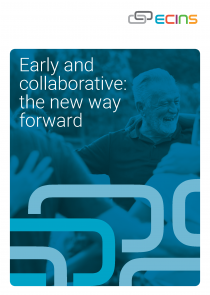Case Study 1. Largest CountyLines Project in the UK
Geographical area: Pan London
Project Aim:
‘This project will develop and deliver a support service for young people who are vulnerable and caught up in county lines drug distribution networks across our region. This issue brings together gangs, national policing strategy, CSE, trafficking, exploitation and vulnerability; underpinned by a complex range of social and structural disadvantage. The need has been identified but is so far only partly understood and sporadically mapped, with support models untested at any scale.
This project will be the first county lines support service that:
- Operates at scale – pan London and for three years
- Includes both support providers and intelligence analysis working together
- Is led by a coalition of London boroughs with support from Metropolitan Police Service special commands and the boroughs and highly experienced London based gangs’ agencies’.
Areas of business:
- Child Sexual Exploitation
- Child Criminal Exploitation
- Safeguarding
- Complex Needs
- Vulnerable Adults
- Domestic Abuse
- Sexual Violence
- Gangs
- Missing Persons
- CountyLines
- Serious Youth Violence
Organisations involved:
- All 33 London Boroughs,
- Project Team based in London
- 3 third sector providers
Systems that make up the solution:
- Encrypted Practitioner Referral Form
- ECINS Referral and Triage Management System with separate Data Vaults for each separate London Borough Team Team and third sector commissioned provider
- ECINS National Multi-Agency Case Management System
Assessments used:
Journey mapping was very important for this project and all assessments are within ECINS. The commissioned providers were able to have their own assessments as well as using assessments specifically designed for this project. All providers are using ‘Star of Change’ which is an outcomes star style assessment. This allows users to over lay previous assessments with the most current one to make it easy to see the service users journey. All fields within the assessments can be exported for analytical purposes and entire cohort journey mapping.
Overview:
ECINS were approached by the project leads as they needed to utilise the multi-agency cross border and national information sharing capabilities of ECINS. The project leads were unaware of Project Affinity and after the initial consultation a solution was created that met all the needs of the providers, the funders, the project leads, Analysts and the University who were conducting the evaluation.
The solution they created with advice from ECINS consisted of 3 systems; An Encrypted Practitioner Referral Form, an ECINS Referral and Triage Management System with separate Data Vaults for each London Borough, the Project Team and third sector commissioned providers and ECINS for the case management element.
The project had 3 commissioned providers from the third sector and each had their own paper based referral forms. The ECINS Project Management Team worked with all three providers and the project leads to create one encrypted referral form for the whole of London to use that captured all the information that the 3 providers and the project leads needed.
The Encrypted Referral form is accessible via a link without having to log in. Once submitted this automatically populates the Referral and Triage Management system saving 1 hour per referral in administration time. Based upon 1000 referrals per annum this automated process saves 25 weeks work of manually entering data, no paper is involved, its an encrypted end to end process and equivalent to a saving of £15,690 per annum in administration alone.
Persons referred in are then transferred to ECINS for case management. This solution not only ensure greater data capture at the referral stage and speeds up processes. The model means that everyone referred in can be offered support wether they are accepted on the programme or not. This has given the project the added bonus of not just being able to support more vulnerable people it has given them a control group so that they can measure outcomes.


